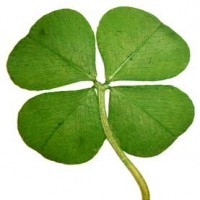Issue Reviewers




 0000-0003-1189-7864
0000-0003-1189-7864


 0000-0003-3533-3422
0000-0003-3533-3422







 0000-0003-3640-1474
0000-0003-3640-1474



Aim & Scope
International Journal of Nature and Life Sciences aims to contribute to the literature by publishing manuscripts at the highest scientific level in all fields of nature sciences and life sciences. The journal publishes original articles, reviews, and short communications that are prepared in accordance with ethical guidelines.
The target audience of the journal includes specialists and professionals working and interested in all disciplines of science. The scope of the journal includes but is not limited to; health sciences, biological and pharmacological studies on topics research and review articles are published.
Author Guidelines
A) Article Writing Codes - (01.01.2024 updated) Article template
- The articles that are sent to be evaluated for publication in the International Journal of Nature and Life Sciences (IJNLS) are designed according to the rules stated below:
- Please write your text in good English. The length of the article should not exceed 30 pages.
- The soft copy of the article is to be typed in Arial Narrow font as a Microsoft Word document.
- The title of the article is aligned in the center in bold with font size 14.
- Author(s’) name(s), name of the current institution, department name, and e-mail address are to be filled in on the copyright form. Since blind refereeing is employed in the journal, information about the author(s) should not be mentioned in the article.
- Initially, there has to be a 'abstract’ of the article in at most 250 words. Keywords (at most 6 words) are to be written.
- Titles in the text are to be numerated with Arabic figures (e.g. 1., 1.1,1.1.2...etc.) with a depth of not more than 4.
- The main titles are to be in font size 10 in bold, and the subtitles and the following are to be in font size 10.
- The text must be written in 1 - spaced 10 point-size.
- Tables and diagrams are to be titled and enumerated. Titles must be positioned above the tables (e.g. Table 1. Name of the table), and under the figures (e.g. Figure 1. Name of the figure.).
- References (APA Style) to the sources must be given in parenthesis in the text. (e.g. Satıl, 2015; Kıvcak et al., 2016; Korkmaz and Selvi, 2016; Zain and Khan, 2017).
- All the sources referred to in the text following the rules stated above must be acknowledged in the bibliography, and sources that are not cited in the text should not be on this list. Sources must be put in alphabetical order and must be regulated according to the examples shown in the ‘bibliography writing’ part (doi required).
- To present the last form of the article organized according to the publication rules before the publication process is in the author’s charge; the articles are not published unless they are presented in the appropriate text format.
- Please note that we accept manuscripts in .doc and .docx formats. Figures and tables should be submitted inside of the main manuscript. Acknowledgment is also strongly recommended.
- Please add the Turnitin / iThenticate plagiarism detection report (Max rate: 20%) to the manuscript. (The system automatically calculates the similarity rate)
- Please add the ethical committee permit of the study (Animal and clinical studies; (The editors will reject papers if there is any doubt about the suitability of the animal or human procedures used).
B) Reference Examples – APA (Am. Psychol. Assoc.) Style
Research Paper - (doi required)
- Erdem, F., Doğan, G., Kıran, Y., & Evren, H. (2017). Morphological, anatomical, palynological and karyological characters of endemic Sideritis vulcanica (Lamiaceae) from Turkey. International Journal of Nature Life Sciences, 1 (1), 1-11.
- Çetinkaya, A. , Karabörk, Ş. , Çelik, H., & Torun, İ. E. (2022). Evaluation of the cytotoxic efficacy of thymoquinone and capsaicin in the SH-SY5Y neuroblastoma cell line. International Journal of Nature and Life Sciences, 6 (2), 118-128. https://doi:10.47947/ijnls.1103372
- Çakılcıoğlu, U. Yüce Babacan, E., & Vitek, E. (2018). Gundelia asperrima (Compositae) – a species endemic in Turkey. Annalen des Naturhistorischen Museums in Wien Serie B. 120, 241-245.
Books, Proceedings of Conferences
- Baytop, T. (1999). Therapy With Medicinal Plants in Turkey (Past and Present). Istanbul: Nobel.
- Davis, P. H. (Ed.). (1965-1985). Flora of Turkey and the East Aegean Islands (Vol. 1-9). Edinburgh: Edinburgh University Press.
- Koenig, W. A, Joulain, D., & Hochmuth, D. H. (2004). Terpenoids and Related Constituents of Essential Oils. MassFinder (3. ed). (Hochmuth, D. H.) (Ed.). Convenient and Rapid Analysis of GCMS, Hamburg, Germany.
- Erdoğan, T., Değirmenci, P., Çakılcıoğlu, U., Demirci, B., Başer, K. C. H., & Kıvcak, B. (2014). Essential oil composition of Centaurea aggregata Fisch. & Mey. ex. DC. subs. aggregata. 45. International Symposium on Essential Oils (ISEO). Natural Volatiles and Essential Oils Special Issue, İstanbul, Turkey, 1, 250.
- Tonbul, S., & Altan, Y. (1986). Elazığ yöresinde halkın çeşitli amaçlar için yararlandığı bazı bitkiler. Fırat Havzası Tıbbi ve Endüstriyel Bitkiler Sempozyumu, (6-8 Ekim) Elazığ, Türkiye
Thesis
1. Khatun, S. (2014). Management of fusarial wilt of the medicinal plant, Coleus forskohlii (Willd.) Briq. PhD. Thesis, Burdwan University, India.
Ethical Principles and Publication Policy
ETHICAL POLICY
If you encounter an unethical situation or content in the International Journal of Nature and Life Sciences, please report it to ijnls@yahoo.com, ugurcakilcioglu@munzur.edu.tr
Effective studies are studies that embody and support the scientific method. All stakeholders (writers, publishers, referees, and editors) at this point must comply with the standards for ethical principles. Within the framework of the International Journal of Nature and Life Sciences publication, all stakeholders are expected to carry out the following ethical responsibilities.
1. The International Journal of Nature and Life Sciences follows the European Code of Conduct for Research Integrity,
2. Refereed articles are studies that require scientific methods and they provide objectivity. All components of the publication process (publisher, editors, authors, reviewers, and readers) should obey ethical rules for scientific production. Within this context, the policies of ‘publication ethics’ and ‘open access’ also require all components of the publication process to obey the ethical principles, in the direction of guides and policies of the Committee on Publication Ethics (COPE), as “Code of Conduct and Best Practice Guidelines for Journal Editors” and “COPE Best Practice Guidelines for Journal Editors”.The authors are expected to fulfill the criteria proposed by McNutt et al., (2018)
3. The editorial and publication processes of the journal are managed according to the regulations of the SCIENTIFIC RESEARCH AND PUBLICATION ETHICS GUIDELINE.
General rules
Original research articles, reviews, case reports and short communications on all aspects of nature and life science, which had not been previously published elsewhere in whole or in part except abstract not exceeding 300 words, are published in the journal.
All manuscripts are checked by a plagiarism checker (iThenticate/Turnitin/intihal.net) allowing for peer review under the %20 score after filtering the references.
The manuscript copyright release form is signed by all authors.
International Journal of Nature and Life Sciences uses a double-blind review procedure, in which both the reviewer and author identities are concealed from each other throughout the process. The authors approve to submit of their manuscript in compliance with the double-blind review policy.
The authors are responsible for the article published in the journal.
Studies comparing products with trade names are not the interest of this journal.
Any materials or products used in the study should not include their trade names.
Studies based on animal experiments should include an approval statement of the Ethical Committee in the materials and methods section.
Please take into consideration the recommendations for following ethical codes:
Authorship
Plagiarism (including self-plagiarism)
Data fabrication/data falsification
Duplicate submission
Corrections and retractions
Human and Animal Rights
Conflicts of interest / Competing interests
Intellectual property
The Ethical Responsibilities of the Authors
For Authors; as journal's policy, approval of research protocols by an ethics committee by international agreements “WMA Declaration of Helsinki - Ethical Principles for Medical Research Involving Human Subjects (last updated: October 2013, Fortaleza, Brazil)” ,“Guide for the care and use of laboratory animals (8th edition, 2011)” and/or “International Guiding Principles for Biomedical Research Involving Animals (2012)” is required for all research studies. If the submitted manuscript does not include ethics committee approval, it will not be processed for evaluation.
It is expected that the author (s) who submit the study to the International Journal of Nature and Life Sciences complies with the following ethical responsibilities:
The works submitted by the author (s) are expected to be original.
If the author (s) benefit from other studies or use other studies, they must cite completely and accurately.
People who do not contribute to the content intellectually in the creation of the study should not be specified as authors.
If the study sent for publication has situations and relations that may constitute a conflict of interest, it should be explained.
The raw data regarding the articles can be requested from the author (s) within the framework of the evaluation processes, in such a case the author (s) must be ready to present the expected data and information to the editorial board and the scientific board.
If the author (s) notices a mistake or error related to the published, early-view, or evaluation phase, there is an obligation to inform the editor of the journal or the publisher, to cooperate with the editor in correction or withdrawal.
Authors cannot submit their work to the evaluation process of more than one journal at the same time.
Ethical Duties and Responsibilities of the Editors
The Editorial Board and Reviewers of the International Journal of Nature and Life Sciences adhere to the guidelines of the International Committee of Medical Journal Editors (ICMJE), Committee on Publication Ethics (COPE), World Association of Medical Editors (WAME), Council of Science Editors (CSE), European Association of Science Editors (EASE), the US National Library of Medicine (NLM), the World Medical Association (WMA), and National Information Standards Organization (NISO).
Making efforts to meet the information needs of readers and authors,
Continuous development of the journal,
Carrying out processes to improve the quality of the works published in the journal,
Ensuring academic integrity,
Continuing business processes without compromising intellectual property rights and ethical standards,
Show clarity and transparency in terms of publication on issues requiring correction and explanation.
Editors should make a positive or negative decision based on the importance of the work including the originality, validity, clarity of expression, and the goals and objectives of the journal.
Unless there is a serious problem for the studies that are suitable for publication, they should take the preliminary evaluation stage.
The editors should not ignore the positive reviews of the referees unless there is a serious problem with the work.
New editors should not change the decisions made by the previous editor (s) for the work unless there is a serious problem.
The editor must determine the referees by the subject of the study.
It is obliged to provide the information and guides that the referees will need during the evaluation phase.
Ethical Responsibilities of Referees
The process of evaluating the International Journal of Nature and Life Sciences is carried out with the principle of double-sided blind refereeing. Reviewers cannot communicate directly with the authors, and the reviews and comments are shared through the journal management system. In this process, the review forms and the referee comments on the full texts are sent to the author (s) through the editor. In this context, the reviewers who evaluate the study for the International Journal of Nature and Life Sciences are expected to have the following ethical responsibilities:
The referee should only accept to evaluate work related to his area of expertise.
The referee should evaluate the assessment in neutrality and confidentiality.
If the referee thinks he/she is facing a conflict of interest during the evaluation process, he/she should refuse to review the study and inform the journal editor.
The referee should make the assessment objectively only about the content of the study. Nationality, gender, religious beliefs, political beliefs, and commercial concerns should not affect the assessment.
The assessment should be constructive and kindly.
The referee should evaluate on time.
If you encounter an unethical situation or content in the International Journal of Nature and Life Sciences, please report it to ijnls@yahoo.com
Publication Policy
International Journal of Nature and Life Sciences (IJNLS) is an international peer-reviewed, open-access journal. The journal accepts English language manuscripts two times a year including in June and December regularly. The journal publishes original articles, reviews, and short communications that are prepared by the ethical guidelines. The review process will take in generally 5-25 days. Printed in Turkey (2017 to date).
IJNLS uses a double-blind review procedure, in which both the reviewer's and author's identities are concealed from each other throughout the process. All contributions will be initially assessed by the editor for suitability for the journal. Papers deemed suitable are then typically sent to a minimum of two independent expert reviewers to assess the scientific quality of the paper. The Editor is responsible for the final decision regarding acceptance or rejection of articles. The Editor's decision is final.
- For the publication of articles, two positive reports are required.
- No correction can be made in a published article.
Price Policy
Publication fee: 1000 TL (40 dollars) *Pricing starts as of 2024.
IBAN: TR310001001781752347465002 Abdulselam İPEK
................................................................................
Statement: IJNLS Shipping Fee
ID number: XXXX
Works published in this journal are licensed under a Creative Commons 4.0 International License
